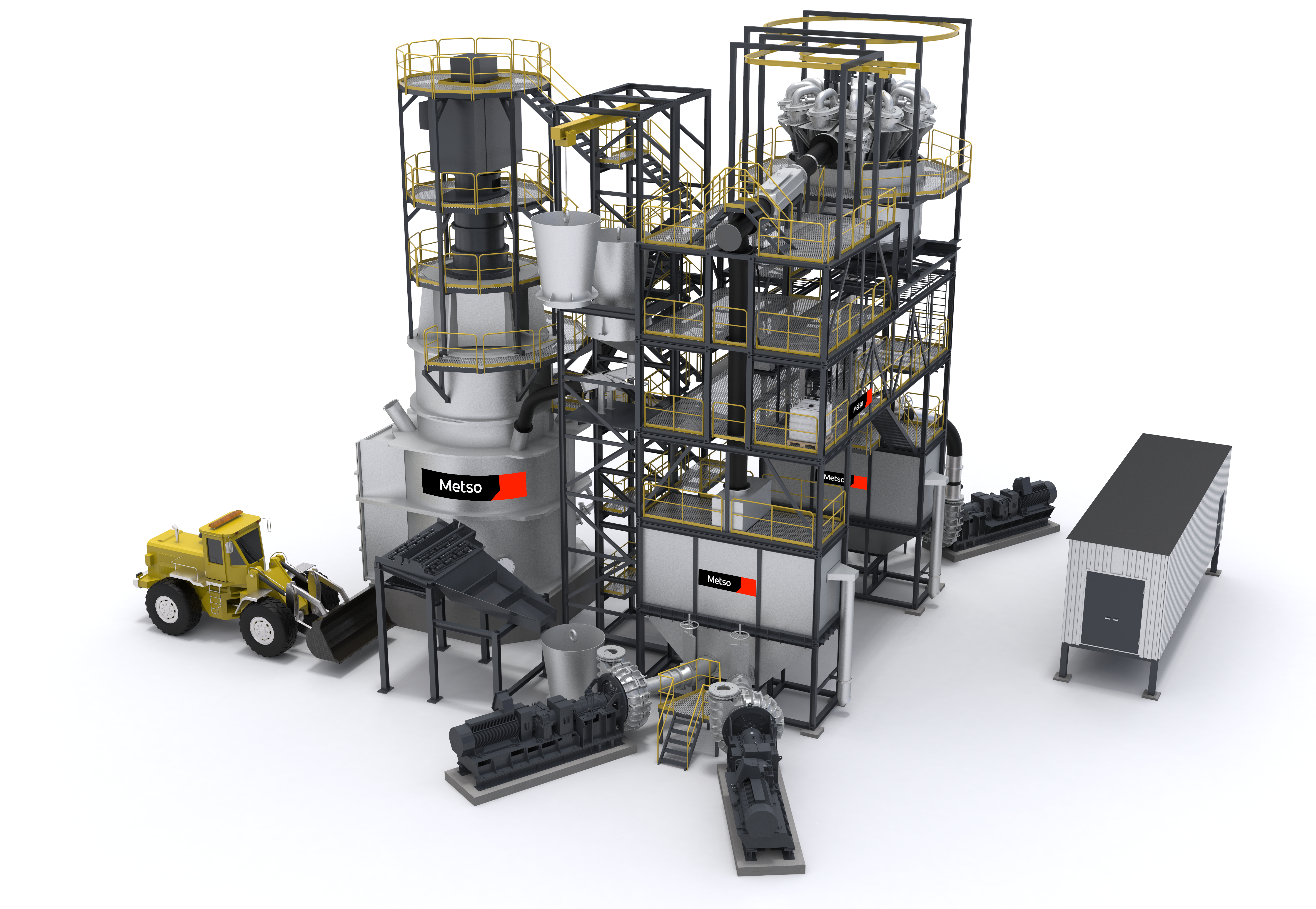The HIGmill™ comprises a mill body, shaft with grinding rotors, shell mounted stator rings, gearbox, and drive. The grinding chamber is filled up to 70% with inert ceramic grinding media beads. Rotors stir the charge and grinding takes place between beads by attrition. The number of rotors (grinding stages) depends on the application and can be as high as 20. Feed slurry is pumped into the bottom mill. When the flow transfers upwards, it passes through all consecutive grinding stages. The final product discharges from the top of the mill into the open atmosphere.
Because of the tall and narrow vertical mill body arrangement, grinding media is evenly distributed and mineral particles remain in constant contact, significantly increasing grinding efficiency.
Energy efficiency
Gravity helps keep the media bed compacted during operation to ensure high intensity inter-bead contact, as well as efficient, even energy transfer throughout the volume. The rotors configuration and the whole chamber geometry have been optimized for efficient energy transfer to the bead mass and internal classification.
Largest industrial units in operation up to 6,500 kW. The HIGmill™ comes in various drum diameters and the mill size can be selected to optimize the media load and power input for specific applications.
Chamber volumes extend up to 50,000 liters with corresponding drives ranging up to 6,500 kW. The HIGmill is the only ultrafine grinding technology having operating references with installed power greater than 3,000 kW.
On-line particle size optimization to maximize process efficiency
HIGmill™ offers a unique opportunity to optimize on-line product fineness. Particle size distributions are measured by the Metso PSI® on-line particle analyzer and the shaft speed is adjusted to maintain constant product size. Alternatively, the circuit can be controlled by measuring scalping cyclone feed quantity and adjusting the mill shaft speed to reach target specific energy.
A compact, simple installation and process
HIGmill™ has a less complex and more compact process layout and flow sheet than other stirred media mills. The process comprises just a scalping cyclone with no circulating load, feed tank and pump, and the mill itself. The benefit of high power intensity and vertical installation is a very small footprint. The head room over the mill is small and the flanged split-shell construction reduces the space needed for maintenance. The top-supported hanging arrangement keeps the floor and sides clear, simplifying maintenance and media removal.


